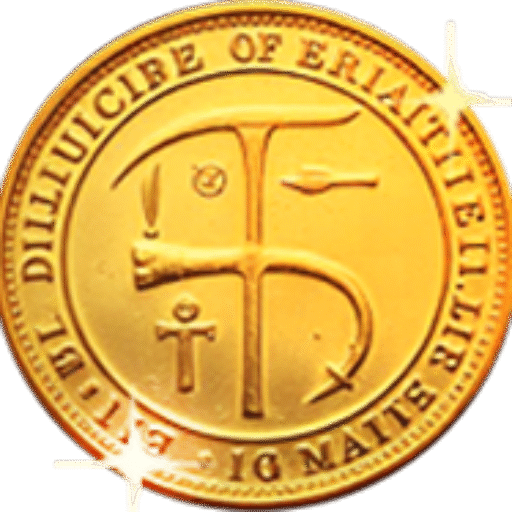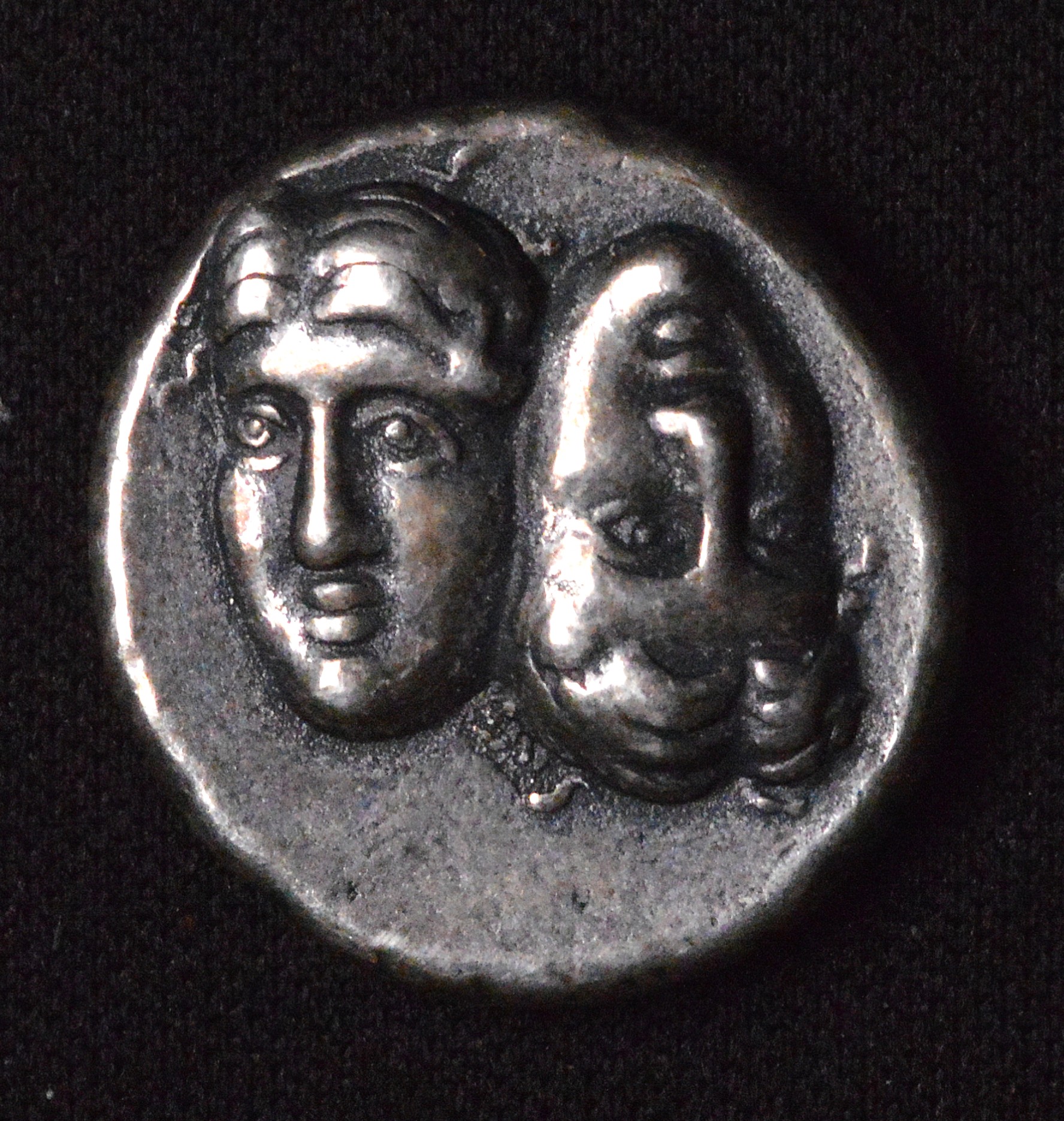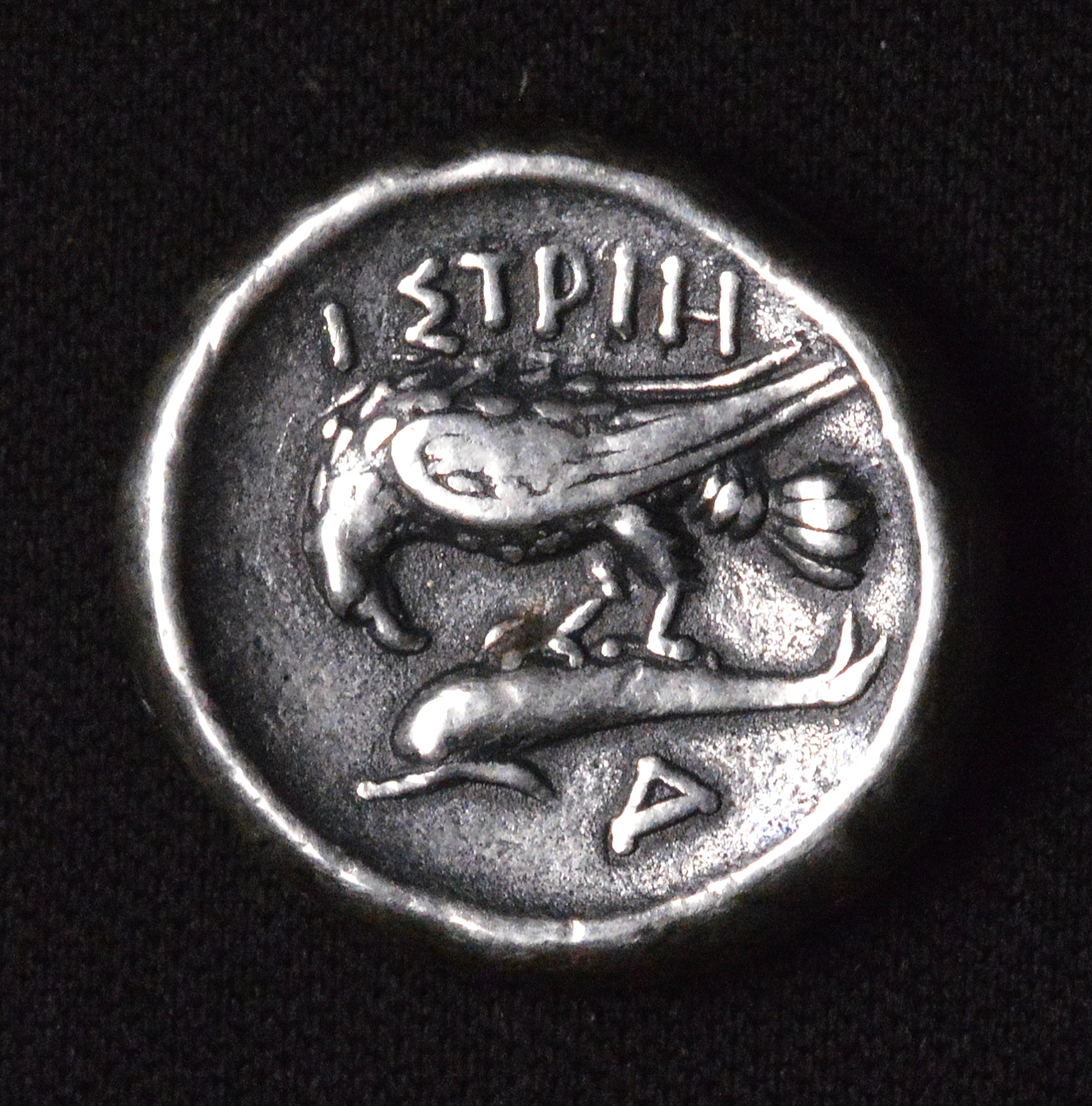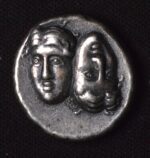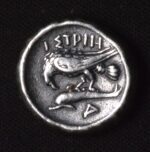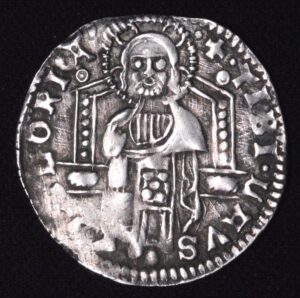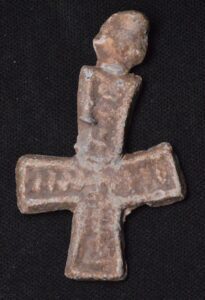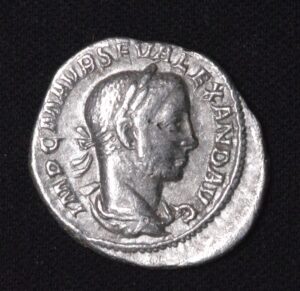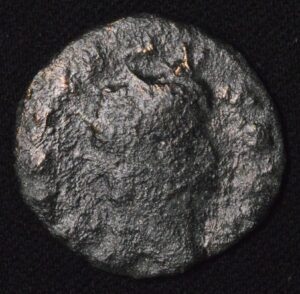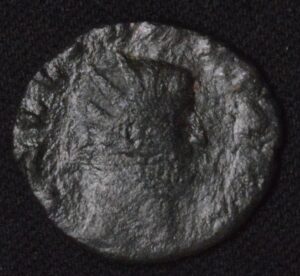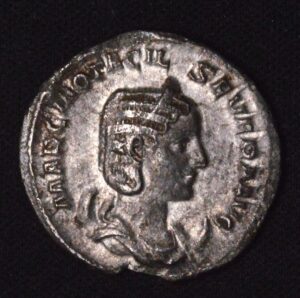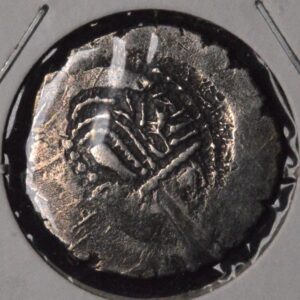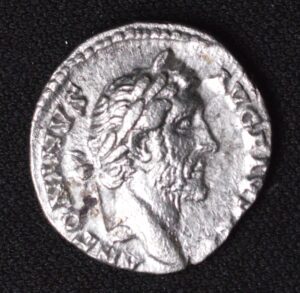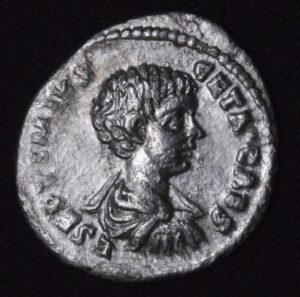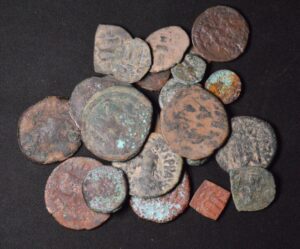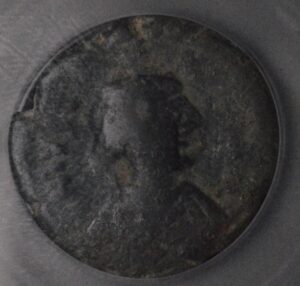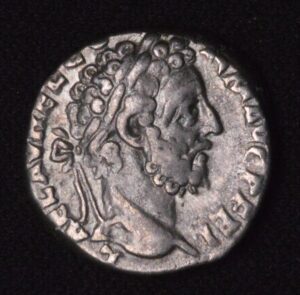Description
The Istros Stater is an ancient Greek silver coin from the city of Istros (also known as Histria), a Greek colony founded around 657-656 BCE on the western coast of the Black Sea near the Danube Delta. This city was an important trading and naval center, and its coinage reflects its strategic and economic significance.
The coin’s obverse features two male heads facing opposite directions. These heads likely represent mythical or divine figures, possibly the Dioscuri (Castor and Pollux) or symbolic dual aspects of the city’s identity such as its military and economic power. This double-headed design is unique and rare in ancient Greek coinage, reflecting the distinct culture and identity of Istros.
The reverse of the Istros stater depicts a powerful eagle perched on a dolphin. The eagle, symbolic of Zeus, represents military strength and authority, while the dolphin indicates the city’s connection to the sea and its reliance on maritime trade. Together, these images highlight Istros’s naval prowess and its control over important trade routes along the Black Sea.
Modern reproductions of the Istros stater duplicate these distinctive designs for collectors and enthusiasts. While fakes or replicas do not hold the historical or monetary value of originals, they are popular for educational purposes and as decorative pieces reflecting ancient Greek art and symbolism.
In summary, the Istros Stater with two male heads and an eagle on a dolphin is a fascinating artifact representing a wealthy Black Sea colony’s political and economic identity. The coin’s powerful imagery speaks to its cultural heritage, maritime strength, and artistic skill—making even reproductions an appealing item for history lovers and numismatists.
The Istros Stater is an ancient Greek silver coin from the city of Istros (also known as Histria), a Greek colony founded around 657-656 BCE on the western coast of the Black Sea near the Danube Delta. This city was an important trading and naval center, and its coinage reflects its strategic and economic significance.
The coin’s obverse features two male heads facing opposite directions. These heads likely represent mythical or divine figures, possibly the Dioscuri (Castor and Pollux) or symbolic dual aspects of the city’s identity such as its military and economic power. This double-headed design is unique and rare in ancient Greek coinage, reflecting the distinct culture and identity of Istros.
The reverse of the Istros stater depicts a powerful eagle perched on a dolphin. The eagle, symbolic of Zeus, represents military strength and authority, while the dolphin indicates the city’s connection to the sea and its reliance on maritime trade. Together, these images highlight Istros’s naval prowess and its control over important trade routes along the Black Sea.
Modern reproductions of the Istros stater duplicate these distinctive designs for collectors and enthusiasts. While fakes or replicas do not hold the historical or monetary value of originals, they are popular for educational purposes and as decorative pieces reflecting ancient Greek art and symbolism.
In summary, the Istros Stater with two male heads and an eagle on a dolphin is a fascinating artifact representing a wealthy Black Sea colony’s political and economic identity. The coin’s powerful imagery speaks to its cultural heritage, maritime strength, and artistic skill—making even reproductions an appealing item for history lovers and numismatists.
The Istros Stater is an ancient Greek silver coin from the city of Istros (also known as Histria), a Greek colony founded around 657-656 BCE on the western coast of the Black Sea near the Danube Delta. This city was an important trading and naval center, and its coinage reflects its strategic and economic significance.
The coin’s obverse features two male heads facing opposite directions. These heads likely represent mythical or divine figures, possibly the Dioscuri (Castor and Pollux) or symbolic dual aspects of the city’s identity such as its military and economic power. This double-headed design is unique and rare in ancient Greek coinage, reflecting the distinct culture and identity of Istros.
The reverse of the Istros stater depicts a powerful eagle perched on a dolphin. The eagle, symbolic of Zeus, represents military strength and authority, while the dolphin indicates the city’s connection to the sea and its reliance on maritime trade. Together, these images highlight Istros’s naval prowess and its control over important trade routes along the Black Sea.
Modern reproductions of the Istros stater duplicate these distinctive designs for collectors and enthusiasts. While fakes or replicas do not hold the historical or monetary value of originals, they are popular for educational purposes and as decorative pieces reflecting ancient Greek art and symbolism.
In summary, the Istros Stater with two male heads and an eagle on a dolphin is a fascinating artifact representing a wealthy Black Sea colony’s political and economic identity. The coin’s powerful imagery speaks to its cultural heritage, maritime strength, and artistic skill—making even reproductions an appealing item for history lovers and numismatists.
CUSTOMER FEEDBACK








Related Products & Newly Released!
-
$30.00
-
$300.00
-
$110.00
-
$69.00




SHIPPING POLICY
Your order is shipped from the United States with USPS tracking within one business day.
14 Day Return Policy
You can return your item back within
14 days of the purchase

Secure payments
Your payments are 100% secure and are processed through Square or PayPal on a protected security network.
SHIPPING POLICY
FREE International and Domestic (United States) shipping. Your order is shipped with USPS tracking 24 hours after you order.
14 Day Return Policy
You can return your item back within
14 days of the purchase

Secure payments
Your payments are 100% secure and are processed through Square or PayPal on a protected security network.
RESOURCES
support
Get Fresh Articles!
Sign up now to receive our articles for the latest insights and promotions!
RESOURCES
support
Get Fresh Articles!
Signup our newsletter to get update insight or promotions.

